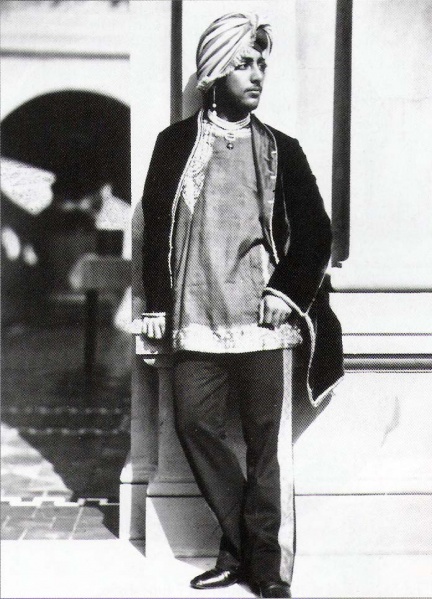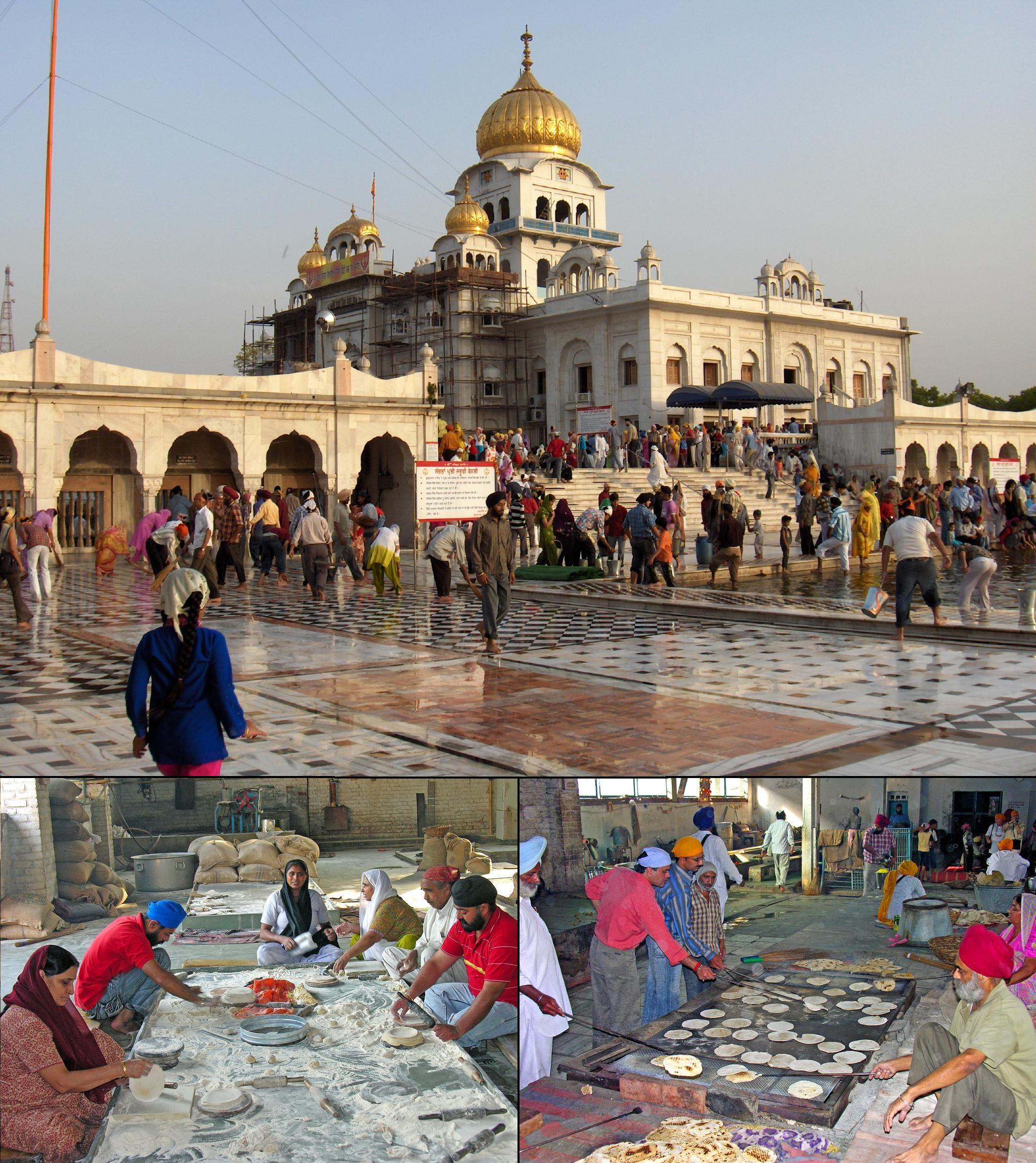|
Sikhism In Afghanistan
Sikhism in Afghanistan in the contemporary era is limited to small populations, primarily in major cities, with the largest numbers of Afghan Sikhs living in Jalalabad, Ghazni, Kabul, and to a lesser extent in Kandahar and Khost. The origin of the Sikh community in Afghanistan has broadly two streams, including indigenous Pashto and Dari speakers, descendants of converts to the teaching of the Sikhism’s founder Guru Nanak during his trip to Kabul around 1520. The second stream derive from the later Sikh Empire as it pushed westward, establishing trading routes for Sikh merchants into Kandahar and Kabul; this group speak Hindko, a dialect of Punjabi. Due to this mixed ancestry, Afghan Sikhs are from various ethnolinguistic backgrounds including Pashtun,Ruchi KumarThe decline of Afghanistan's Hindu and Sikh communities, Al Jazeera, 2017-01-01, "the culture among Afghan Hindus is predominantly Pashtun"Beena SarwarFinding lost heritage, Himal, 2016-08-03, "Singh also came across ... [...More Info...] [...Related Items...] OR: [Wikipedia] [Google] [Baidu] |
Pashto
Pashto (,; , ) is an Eastern Iranian language in the Indo-European language family. It is known in historical Persian literature as Afghani (). Spoken as a native language mostly by ethnic Pashtuns, it is one of the two official languages of Afghanistan alongside Dari,Constitution of Afghanistan �''Chapter 1 The State, Article 16 (Languages) and Article 20 (Anthem)''/ref> and it is the second-largest provincial language of Pakistan, spoken mainly in Khyber Pakhtunkhwa and the northern districts of Balochistan. Likewise, it is the primary language of the Pashtun diaspora around the world. The total number of Pashto-speakers is at least 40 million, (40 million) although some estimates place it as high as 60 million. Pashto is "one of the primary markers of ethnic identity" amongst Pashtuns. Geographic distribution A national language of Afghanistan, Pashto is primarily spoken in the east, south, and southwest, but also in some northern and western parts of the country. The ... [...More Info...] [...Related Items...] OR: [Wikipedia] [Google] [Baidu] |
Sikh Empire
The Sikh Empire was a state originating in the Indian subcontinent, formed under the leadership of Maharaja Ranjit Singh, who established an empire based in the Punjab. The empire existed from 1799, when Maharaja Ranjit Singh captured Lahore, to 1849, when it was defeated and conquered in the Second Anglo-Sikh War. It was forged on the foundations of the Khalsa from a collection of autonomous Sikh ''misls''. At its peak in the 19th century, the Empire extended from the Khyber Pass in the west to western Tibet in the east, and from Mithankot in the south to Kashmir in the north. It was divided into four provinces: Lahore, in Punjab, which became the Sikh capital; Multan, also in Punjab; Peshawar; and Kashmir from 1799 to 1849. Religiously diverse, with an estimated population of 3.5 million in 1831 (making it the 19th most populous country at the time), Amarinder Singh's The Last Sunset: The Rise and Fall of the Lahore Durbar it was the last major region of the Indian subc ... [...More Info...] [...Related Items...] OR: [Wikipedia] [Google] [Baidu] |
Canadian Broadcasting Corporation
The Canadian Broadcasting Corporation (french: Société Radio-Canada), branded as CBC/Radio-Canada, is a Canadian public broadcaster for both radio and television. It is a federal Crown corporation that receives funding from the government. The English- and French-language service units of the corporation are commonly known as CBC and Radio-Canada, respectively. Although some local stations in Canada predate the CBC's founding, CBC is the oldest existing broadcasting network in Canada. The CBC was established on November 2, 1936. The CBC operates four terrestrial radio networks: The English-language CBC Radio One and CBC Music, and the French-language Ici Radio-Canada Première and Ici Musique. (International radio service Radio Canada International historically transmitted via shortwave radio, but since 2012 its content is only available as podcasts on its website.) The CBC also operates two terrestrial television networks, the English-language CBC Television and the Frenc ... [...More Info...] [...Related Items...] OR: [Wikipedia] [Google] [Baidu] |
Sikhism In The United States
American Sikhs number nearly 500,000 people and account for 0.1% of the United States population as of 2021, forming the country's seventh-largest religious group. The largest Sikh populations in the U.S. are found in California, especially in the Central Valley, followed by New York and Washington. Sikhism is a religion originating from medieval India (predominantly from the Punjab region of modern-day India and Pakistan) which was introduced into the United States during the 19th century. While most American Sikhs are Punjabi, the United States also has a number of non-Punjabi converts to Sikhism. Sikh men are typically identifiable by their unshorn beards and turbans (head coverings), articles of their faith. Following the 9/11 terrorist attacks, and subsequent other terrorism related activities by Islamic groups, Sikhs have often been mistaken as Muslims or Arabs, and have been subject to several hate crimes, including murders. Sikh temples have also been targets of violen ... [...More Info...] [...Related Items...] OR: [Wikipedia] [Google] [Baidu] |
Sikhism In The United Kingdom
British Sikhs number over 520,000 people and account for 0.88% of England and Wales's population as of 2021, forming the United Kingdom's fourth-largest religious group. According to the 2021 United Kingdom census, Sikhs in England & Wales numbered 524,140, with 520,092 in England and 4,048 in Wales. The largest Sikh populations in the U.K. are in the West Midlands and Greater London. History Sikhs and Britain have a long and storied history. Decades before the last Sikh King, Duleep Singh, stepped onto British soil in the middle of the 19th century, there had been Anglo-Sikh contact as far back as the 1800s in the Punjab with his father Maharaja Ranjit Singh. Since then, even though this relationship has changed in nature many times, both communities have left a strong permanent influence on each other. For instance, in such varied parts of British society as food, language, political systems, soldiering and of course cricket, the British-Sikh relationship has given rise ... [...More Info...] [...Related Items...] OR: [Wikipedia] [Google] [Baidu] |
Voice Of America
Voice of America (VOA or VoA) is the state-owned news network and international radio broadcaster of the United States of America. It is the largest and oldest U.S.-funded international broadcaster. VOA produces digital, TV, and radio content in 48 languages which it distributes to affiliate stations around the globe. It is primarily viewed by a non-American audience. VOA was established in 1942, and the VOA charter (Public Laws 94-350 and 103–415) was signed into law in 1976 by President Gerald Ford. VOA is headquartered in Washington, D.C., and overseen by the U.S. Agency for Global Media (USAGM), an independent agency of the U.S. government. Funds are appropriated annually under the budget for embassies and consulates. In 2016, VOA broadcast an estimated 1,800 hours of radio and TV programming each week to approximately 236.6 million people worldwide with about 1,050 employees and a taxpayer-funded annual budget of . While Voice of America is seen by some foreign list ... [...More Info...] [...Related Items...] OR: [Wikipedia] [Google] [Baidu] |
Sikhism In India
Indian Sikhs number over 20 million people and account for 1.7% of India's population as of 2011, forming the country's fourth-largest religious group. The majority of the nation's Sikhs live in the northern state of Punjab, which is the only Sikh-majority administrative division in the world. India is home to the majority of the global Sikh population, and also has the second-largest Sikh proportion in the world, behind Canada. History Partition Sikh organizations, including the Chief Khalsa Dewan and Shiromani Akali Dal led by Master Tara Singh, strongly opposed the partition of India, viewing the possibility of the creation of Pakistan as inviting persecution. Demographics Population India's Sikh population stands at 20.8 million, which is only 1.72% of the country's total population. Out of approximately 25-30 million Sikhs in the world, the majority of them, 20.8-22 million, live in India that is about (83.2%-84.1%) of the world's Sikh population. Sikhs have a f ... [...More Info...] [...Related Items...] OR: [Wikipedia] [Google] [Baidu] |
Wolesi Jirga
The House of Representatives of the People, or Da Afghanistan Wolesi Jirga ( ps, دَ افغانستان ولسي جرګه), was the lower house of the bicameral National Assembly of the Islamic Republic of Afghanistan, alongside the upper House of Elders. The House of Representatives of the People was the chamber that bore the greater burden of lawmaking in the country, as with the House of Commons in the Westminster model. It consisted of 250 delegates directly elected by single non-transferable vote. Members were elected by district and served for five years. The constitution guaranteed at least 68 delegates to be female. Kuchi nomads elect 10 representatives through a Single National Constituency. The House of Representatives of the People had the primary responsibility for making and ratifying laws and approving the actions of the president. The first elections in decades were held in September 2005, four years after the fall of the Taliban regime, still under internationa ... [...More Info...] [...Related Items...] OR: [Wikipedia] [Google] [Baidu] |
Census
A census is the procedure of systematically acquiring, recording and calculating information about the members of a given population. This term is used mostly in connection with national population and housing censuses; other common censuses include censuses of agriculture, traditional culture, business, supplies, and traffic censuses. The United Nations (UN) defines the essential features of population and housing censuses as "individual enumeration, universality within a defined territory, simultaneity and defined periodicity", and recommends that population censuses be taken at least every ten years. UN recommendations also cover census topics to be collected, official definitions, classifications and other useful information to co-ordinate international practices. The UN's Food and Agriculture Organization (FAO), in turn, defines the census of agriculture as "a statistical operation for collecting, processing and disseminating data on the structure of agriculture, covering th ... [...More Info...] [...Related Items...] OR: [Wikipedia] [Google] [Baidu] |
Afghanistan Conflict (1978-present)
War in Afghanistan, Afghan war, or Afghan civil war may refer to: *Conquest of Afghanistan by Alexander the Great (330 BC – 327 BC) *Muslim conquests of Afghanistan (637–709) *Conquest of Afghanistan by the Mongol Empire (13th century), see also Mongol invasion of Central Asia (1216–1222) *Mughal conquests in Afghanistan (1526) *Afghan Civil War (1863–1869), a civil war between Sher Ali Khan and Mohammad Afzal Khan's faction after the death of Dost Mohammad Khan * Anglo−Afghan Wars (first involvement of the British Empire in Afghanistan via the British Raj) ** First Anglo−Afghan War (1839–1842) ** Second Anglo−Afghan War (1878–1880) ** Third Anglo−Afghan War (1919) *Panjdeh incident (1885), first major incursion into Afghanistan by the Russian Empire during the Great Game (1830–1907) with the United Kingdom of Britain and Ireland * First Afghan Civil War (1928–1929), revolts by the Shinwari and the Saqqawists, the latter of whom managed to take over Kabul for ... [...More Info...] [...Related Items...] OR: [Wikipedia] [Google] [Baidu] |
Punjabi People
The Punjabis ( Punjabi: ; ਪੰਜਾਬੀ ; romanised as Panjābīs), are an Indo-Aryan ethnolinguistic group associated with the Punjab region of the Indian subcontinent, comprising areas of eastern Pakistan and northwestern India. They generally speak Standard Punjabi or various Punjabi dialects on both sides. The ethnonym is derived from the term ''Punjab'' (Five rivers) in Persian to describe the geographic region of the northwestern part of the Indian subcontinent, where five rivers Beas, Chenab, Jhelum, Ravi, and Sutlej merge into the Indus River, in addition of the now-vanished Ghaggar. The coalescence of the various tribes, castes and the inhabitants of the Punjab region into a broader common "Punjabi" identity initiated from the onset of the 18th century CE. Historically, the Punjabi people were a heterogeneous group and were subdivided into a number of clans called '' biradari'' (literally meaning "brotherhood") or ''tribes'', with each person bound to a cl ... [...More Info...] [...Related Items...] OR: [Wikipedia] [Google] [Baidu] |
Hindkowan
Hindkowans (lit. "Indian-speakers"), also known as the Hindki, is a contemporary designation for speakers of Indo-Aryan languages who live among the neighbouring Pashtuns, particularly the speakers of various Hindko dialects of Lahnda. The origins of the term refer merely to "Indian speaking" people (i.e. speakers of Indo-Aryan languages) rather than to any particular ethnic group. The term is not only applied to several forms of "Northern Lahnda" but also to the Saraiki dialects of the districts of Dera Ghazi Khan, Mianwali, and Dera Ismail Khan, which border the southern Pashto-speaking areas. There is also a small diaspora in Afghanistan, which includes members of the Sikh and Hindu community who became established there during the Sikh Empire in the first half of the 19th century. Most of them have emigrated since the rise of the Taliban, and the total population of Sikhs, Hindko-speaking or not, was estimated at around 300 families (as of 2018). They are commonly know ... [...More Info...] [...Related Items...] OR: [Wikipedia] [Google] [Baidu] |






